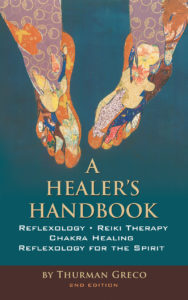Your Liver, Your Life and 2020 – 10 Liver-Friendly Tips
We’re just fresh into the new year. 2020 is here!
For many of us, the new year brings intestinal and liver cleanses encouraging the good health resolution we always make. Both in my wellness book and my blog posts, I refer to cleanses.
What better time is there for a cleanse than now – in January of the new year?
I always recommend an intestinal cleanse before the liver cleanse. Actually, the two cleanses are partners working together for your good health.
STEP ONE is an intestinal cleanse designed to detox your digestive system. When your intestinal tract is clean, you will feel better, have more energy, and be more alert. But, a key purpose of this intestinal cleanse is to prepare you to detox your liver.
If you detox your liver before cleaning your intestinal tract, you may overload your digestive system. The result may not leave you feeling better, more alert, and energetic.
So, the best way to go is to detox your intestinal tract first.
STEP TWO is a liver detox. With a clean intestinal tract, the toxins will leave your body much easier.
When you think about your liver and what it does, it only makes sense to have a liver cleanse last.
Your liver is your body’s largest and most complex organ. Some textbooks describe the tasks your liver performs in the hundreds. How can one organ in the body do all the things it’s supposed to do? Your liver processes your food nutrients, removes contaminents, stores minerals and vitamins, regulates blood clotting. On top of the many things your liver does, it regenerates itself.
Your liver is vital to your health and wellbeing.
So, your liver should thank you for giving it a detox.
And, after your detox, your liver should easily and effectively process all the things you put in your body. What can you do after your detox to help keep it in good running order?
There are several things you can do which will help your liver function better…especially if you have health issues affecting your liver.
ENJOY A CUP OR TWO OF COFFEE. Caffeine is good for your liver.
LOW-FAT FOODS. Avoid saturated and trans fats which don’t go well with a fatty liver.
SKIP THE SUGAR. Now that the holidays are over, it’s time to eat few to no sweets.
GET THE SALT OUT. Too much salt in your diet contributes to high blood pressure which is hard on your liver.
EAT MORE FRUITS AND VEGGIES. These foods offer a variety of vitamins and minerals which are easier to digest than the supplements themselves.
GO FOR WHOLE GRAINS. Brown rice, beans, whole grain breads are preferred.
WATER, WATER, WATER EVERYWHERE. Drink a lot of water…everyday.
SKIP RAW FISH AND MEATS. Your goal is to avoid introducing harmful bacteria to your liver.
SKIP THE ALCOHOL. If you have health issues, alcohol is too stressful on your body.
So, there you have it. I truly hope this list will help you and your whole body health maintenance in the coming year. These tips are all liver-friendly. Your liver is important to your overall health – every day.
Thanks for reading this article.
Please refer this blog post to your preferred social media network.
Thurman Greco
Thurman Greco
What is the Practical Application? – Part 2
As you begin the warm ups, what do you find? How cold are the feet? How easily do the ankles rotate? Ankles are important. They move us forward through life.
If you encounter stiff ankles, the person is not moving forward easily. If the feet and ankles are swollen, the person is suffering through a stressful situation.
Begin the actual session at the toes. Rotating the toes is important because this is where most of the stress is located.
When you observe hammertoes, work on them early in the session.
The solar plexus is very important. Offering rotations to the solar plexus is the single most important thing you can do for your client partner.
Work the nervous system early in the session. It’s a booster system and should always be used when you are trying to resolve a health issue. The nervous system becomes important to you as you facilitate homeostasis.
Your next step is to work the immune system. Working the immune system in conjunction with the nervous system can offer significant changes.
Follow this with attention to the digestive system including a focus on the intestinal tract. Because good health begins in the intestinal tract, work the intestinal tract as often as you can in your sessions whether or not the person has voiced complaints.
Then, work the systems you feel need attention. If you have time and don’t feel drawn to a particular system or foot area, go for the endocrine system. This is the system that is, really, the most responsive to spiritual work.
With any time remaining, give attention to the areas of discoloration, puffiness, mushiness, cold, etc.
Offer warm downs for about 5 minutes to return the client to the present. Most people receiving regular work from a Reflexology for the Spirit practitioner go into a deep state encouraging healing and homeostasis. This most often happens when the person does not engage in any conversation during the session.
There are many reactions which a client can exhibit during and after sessions. Don’t elaborate on them because a certain percentage of people will experience reactions simply because you talked about them.
Let them occur naturally…if they are going to happen.
Thank you for reading this post. This ends the section of practical application tips.
Tomorrow’s post will offer a guided meditation to use for yourself or read to someone else.
Peace and food for all
Thurman









